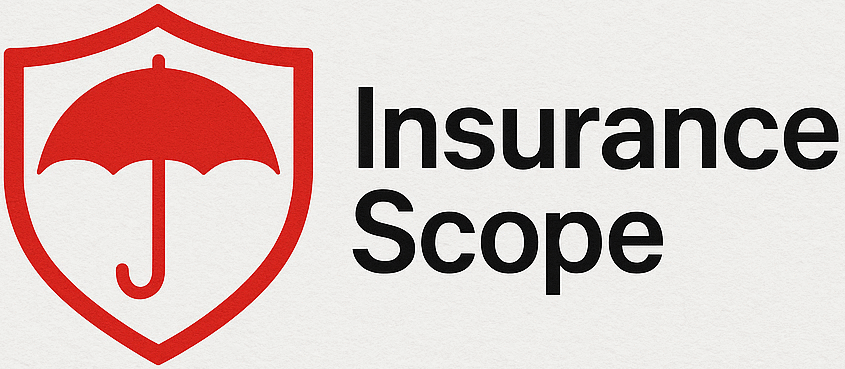
Insurance Underwriting has become a backbone of money security in the modern world. Whether it is protecting your health, safeguarding your property, or ensuring your family’s future, insurance provide peace of mind against uncertaintie However, very few people understand how insurer decide intalment how much coverage is adequate, or why policy rates differ from one person to another.
Insurance Underwriting
Insurance Underwriting is the process of evaluating and analyzing the risk of insuring an individual, property, or business. It helps insurers decide whether to provide coverage, what kind of terms to set, and how much premium to charge.
Why Underwriting Matters
- Prevents financial losses by rejecting uninsurable risk
- Ensures fair pricing so each policyholder pays according to their unique profile.
- Maintains stability in the insurance market by balancing risk distribution.
Key Factors Considered in Underwriting
Personal Information – Age, gender, and occupation.
Health and Lifestyle – Medical record habit like smoking or drinking.
Property Conditions – Location, construction quality, safety system
Driving Records – For auto insurance, accident history and claims record.
Types of Underwriting
- Life Insurance Underwriting – Focuses on life expectancy, health, and family history.
- Health Insurance Underwriting – Examine medical history, pre-existing condition, and lifestyle.
- Property and Auto Underwriting – Consider accident risk natural disaster and property values.
Modern Innovations in Underwriting
- AI and Machine Learning: Automating risk assessment.
- Data Analytics: Predicting customer behavior.
- Digital Platforms: Instant underwriting decision for online plan
Insurance Estimation

InsuranceUnderwriting Estimation is the process of calculating how much coverage a policyholder needs and what the expected cost will be. Estimation ensures that customers are neither underinsured nor overpaying for unnecessary coverage.
Importance of Insurance Estimation
Adequate Protection – Ensure the insured has enough coverage in case of claim
Budgeting Tool – Helps individual and businesses manage financial planning.
Transparency – Creates trust between the insurer and the customer.
Examples of Insurance Estimation
- Health Insurance Estimation: Predicting medical bills, hospital costs, and medicine expenses.
- Auto Insurance Estimation: Based on car value, accident likelihood, and driver’s history.
- Property Insurance Estimation: Calculated using construction costs, location risks, and property value.
Methods of Estimation
- Actuarial Models – Professional statisticians use historical data to predict risks.
- Market Value Method – Estimating coverage based on current asset value.
- Replacement Cost Method – Calculating how much it would cost to replace or rebuild.
- Online Estimators – Insurance companies provide calculators for instant premium estimates.
Role of Technology in Estimation
Big data, IoT (Internet of Things), and AI-powered prediction models are making estimations more accurate, efficient, and customer-friendly.
Insurance Policy Rates

Insurance Policy Rates are the actual premiums customers pay for their insurance coverage. These rates are influenced by underwriting decisions and estimation results, along with external factors like market conditions and regulations.
Factors Affecting Insurance Policy Rates
Age and Health – Young and healthy individuals enjoy lower installment
Occupation and Lifestyle – Risky jobs or smoking habits increase rate
Location – Urban areas often face higher auto or property insurance rate
Type and Amount of Coverage – More coverage equals higher installment
Economic Conditions – Inflation and healthcare costs directly impact rates.
How Policy Rates Are Calculated
Base Premium – Standard price set for a category of risk.
Risk Adjustments – Personal factors that increase or decrease rates
Discounts and Rewards – Safe drivers, healthy lifestyles, or loyal customers often get discounts.
Final Premium – The amount policyholders pay.
Examples of Policy Rates
- A 25-year-old healthy non-smoker may pay $30 per month for life insurance, while a 50-year-old smoker may pay $150.
- A homeowner in a flood-prone zone will face higher property insurance premiums than one in a safer area.
Underwriting, Estimation
These three processes are interconnected:
- Insurance Underwriting evaluates the risk.
- Insurance Estimation calculate the required coverage and likely costs.
- Insurance Policy Rates finalize the intalment a customer must pay.
Without underwriting, insurers would not know the level of risk. Without estimation, coverage would be inaccurate. Without fair policy rates, the system would collapse due to financial imbalance.
Challenges Facing the Insurance Industry
Rising Medical Costs – Making health insurance more expensive.
Climate Change – Causing higher property and disaster-related claims.
Fraudulent Claims – Forcing insurers to apply stricter sponsor.
Economic Fluctuations – Inflation increases overall insurance costs.
The Future of Insurance
- AI-Driven Underwriting: Faster, more accurate approval
- Blockchain Technology: Reducing fraud and improving transparency.
- Personalized Policy Rates: Tailored premiums based on behavior.
- Usage-Based Insurance: Especially for auto insurance, where intalment are linked to driving patterns.
Conclusion
The three pillars of Insurance Underwriting, Insurance Estimation, and Insurance Policy Rates—form the foundation of the industry. Underwriting ensures risks are properly evaluated, estimation guarantees fair and adequate coverage, and policy rates define the price customers must pay. Together, these elements create balance and trust between insurers and policyholders.
FAQs
Q1: What is the role of Insurance Underwriting?
It evaluates risk and determines terms of coverage.
Q2: How does Insurance Estimation help customers?
It ensures they get adequate protection without overpaying.
Q3: What factors affect Insurance Policy Rates?
Age, health, lifestyle, location, and amount of coverage.
Q4: Can technology change insurance pricing?
Yes, AI and big data are making rates more accurate and personalized.





